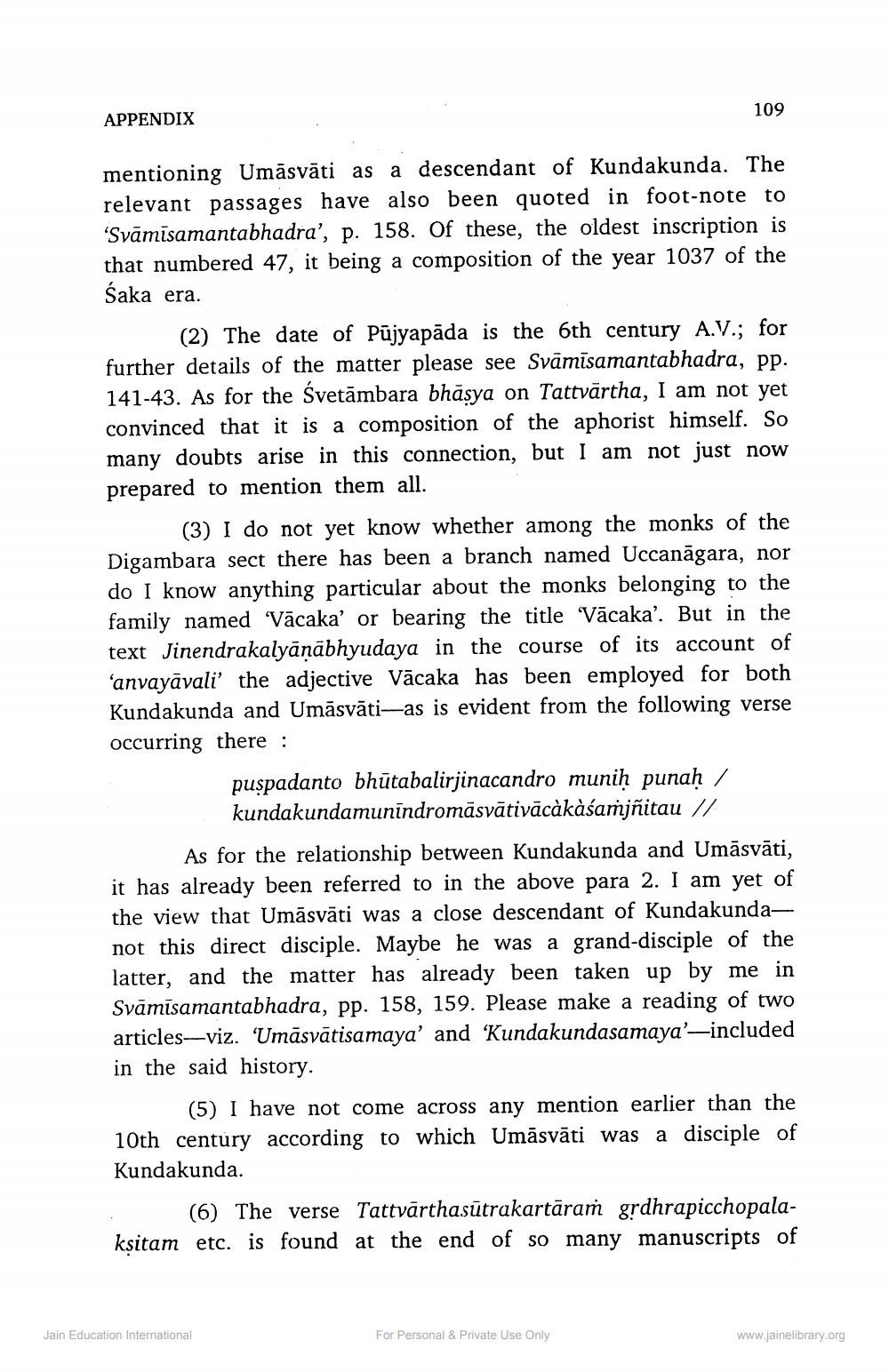________________
APPENDIX
109
mentioning Umāsvāti as a descendant of Kundakunda. The relevant passages have also been quoted in foot-note to 'Svāmīsamantabhadra', p. 158. Of these, the oldest inscription is that numbered 47, it being a composition of the year 1037 of the Śaka era.
(2) The date of Pūjyapāda is the 6th century A.V.; for further details of the matter please see Svāmīsamantabhadra, pp. 141-43. As for the Švetāmbara bhāsya on Tattvārtha, I am not yet convinced that it is a composition of the aphorist himself. So many doubts arise in this connection, but I am not just now prepared to mention them all.
(3) I do not yet know whether among the monks of the Digambara sect there has been a branch named Uccanāgara, nor do I know anything particular about the monks belonging to the family named Vācaka' or bearing the title Vācaka'. But in the text Jinendrakalyāņābhyudaya in the course of its account of 'anvayāvali' the adjective Vācaka has been employed for both Kundakunda and Umāsvāti—as is evident from the following verse occurring there :
puspadanto bhūtabalirjinacandro muniḥ punaḥ /
kundakundamunīndromāsvātivācàkàśamjñitau //
As for the relationship between Kundakunda and Umāsvāti, it has already been referred to in the above para 2. I am yet of the view that Umāsvāti was a close descendant of Kundakundanot this direct disciple. Maybe he was a grand-disciple of the latter, and the matter has already been taken up by me in Svāmīsamantabhadra, pp. 158, 159. Please make a reading of two articles—viz. 'Umāsvātisamaya' and 'Kundakundasamaya'—included in the said history.
(5) I have not come across any mention earlier than the 10th century according to which Umāsvāti was a disciple of Kundakunda.
(6) The verse Tattvārthasūtrakartāraṁ grdhrapicchopalakṣitam etc. is found at the end of so many manuscripts of
Jain Education International
For Personal & Private Use Only
www.jainelibrary.org




